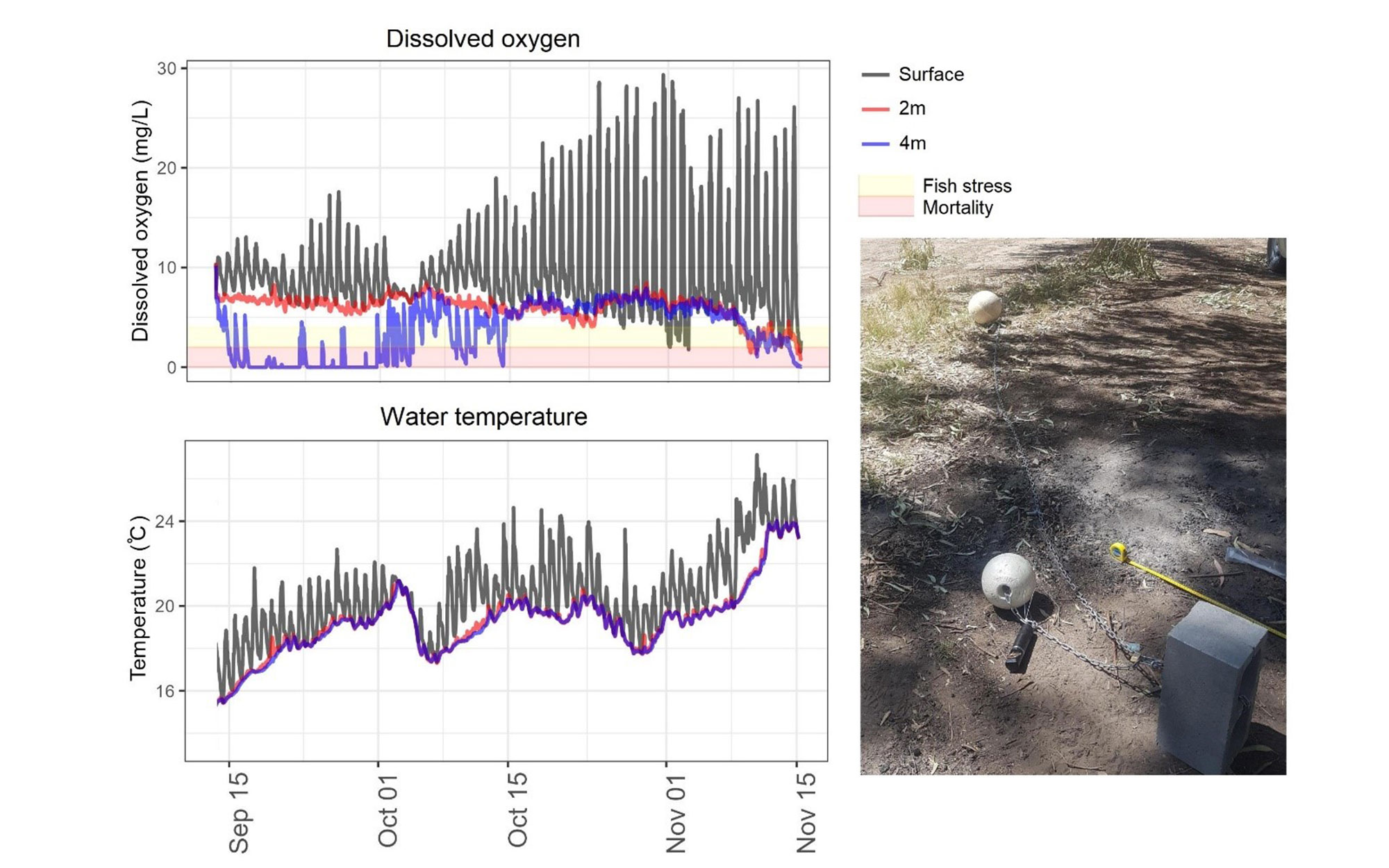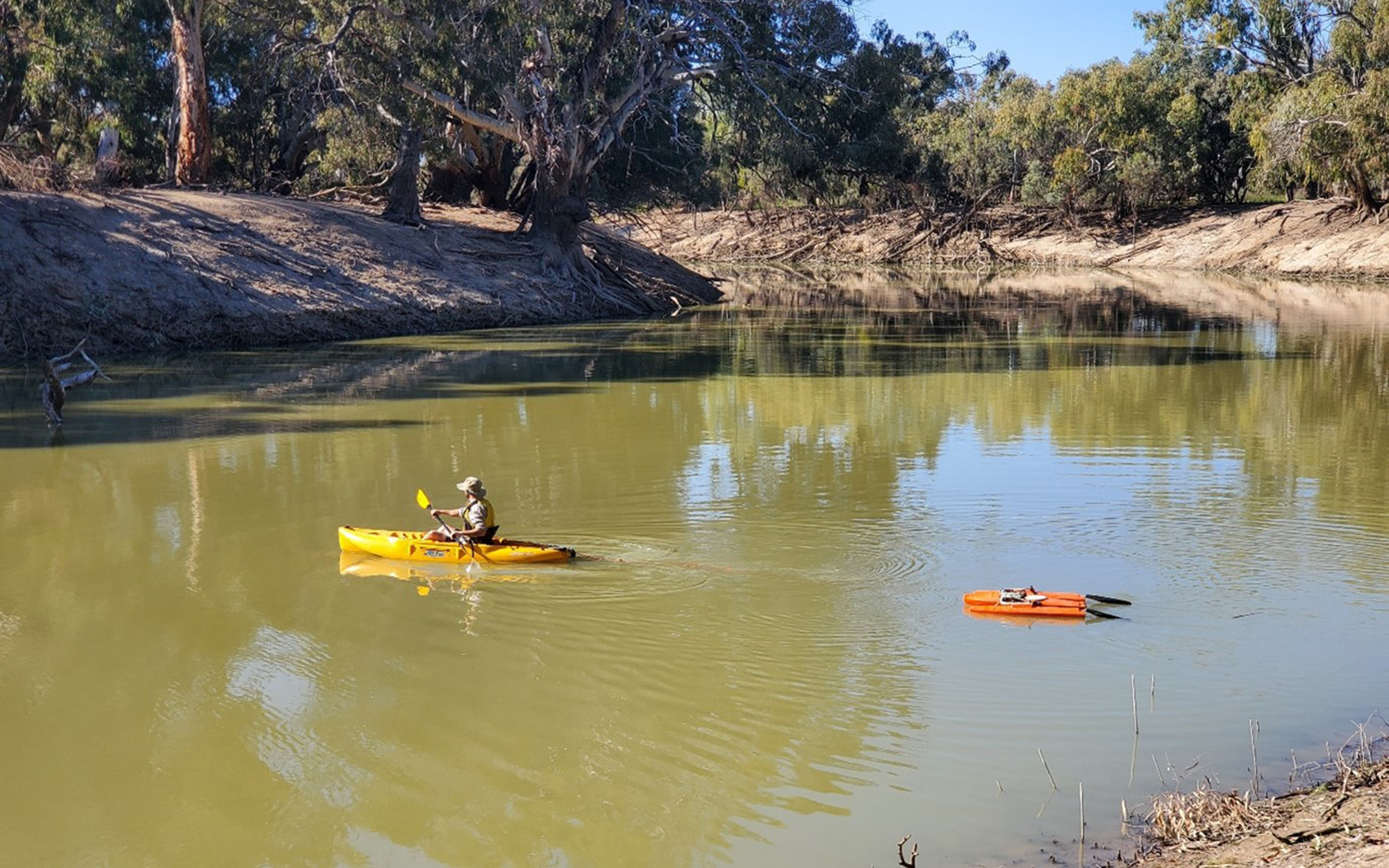Flow, thermal stratification and dissolved oxygen in the Darling-Baaka River
Thermal stratification occurs when flow velocities in a river are very low and warm water at the surface sits above a layer of cooler water deeper in the river. This creates ideal conditions for toxic cyanobacterial blooms and may result in dangerously low dissolved oxygen, potentially leading to fish deaths.
This sampling is part of a long-term monitoring project in collaboration with the University of Technology Sydney. It involves measuring the flow velocity and bathymetry at each monitoring site with an Acoustic doppler current profiler and attaching temperature and dissolved oxygen loggers at several depths along a chain (pictured on right) anchored to the bottom of the river. Temperature monitoring extends from Collarenebri to Pooncarie with additional dissolved oxygen monitoring at nine sites from Tilpa to Pooncarie.
Preliminary results show occasional thermal stratification between September and November. Dissolved oxygen below 4 metres depth was consistently below thresholds for fish stress (4mg/L) and mortality (2mg/L). Higher flows appeared to mix the water column, suppressing thermal stratification and supporting higher dissolved oxygen at several sites. The data from this project will allow us to understand what flows are required to minimise or break-up thermal stratification and suppress algal blooms and fish deaths in these weir pools.

